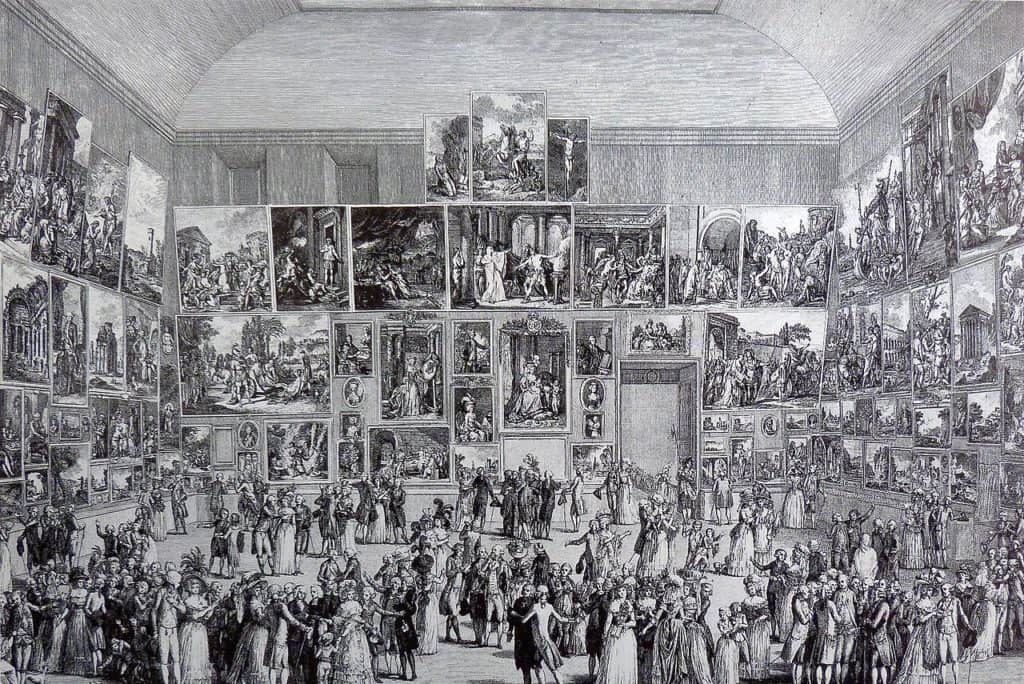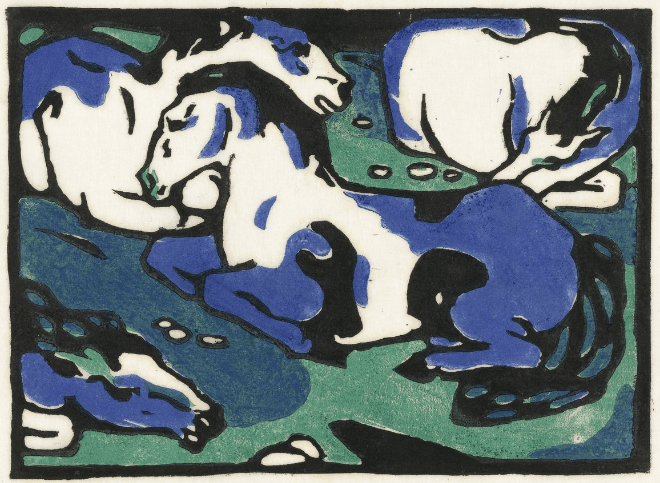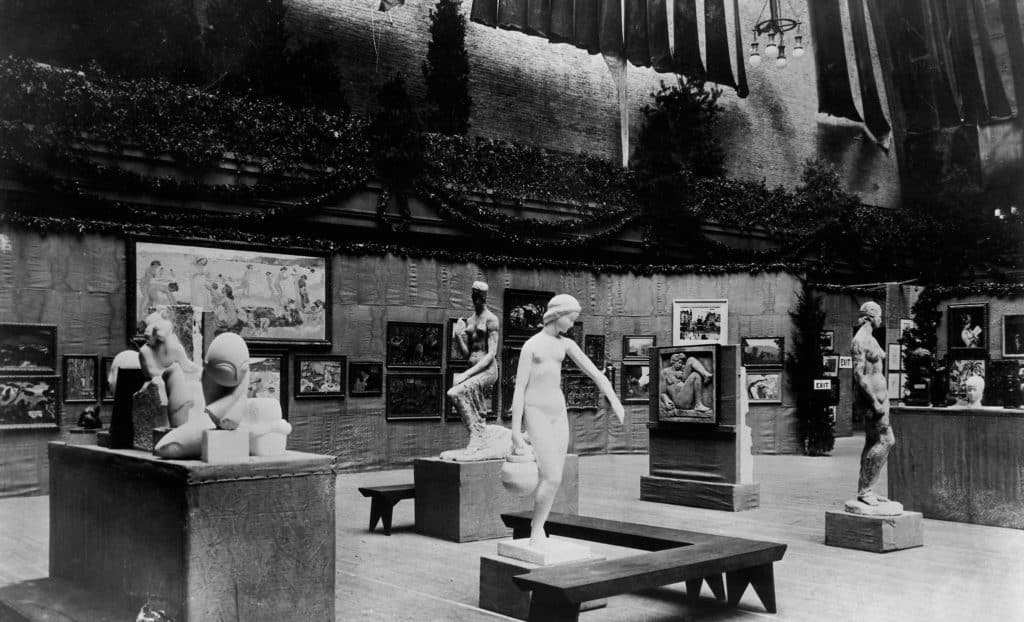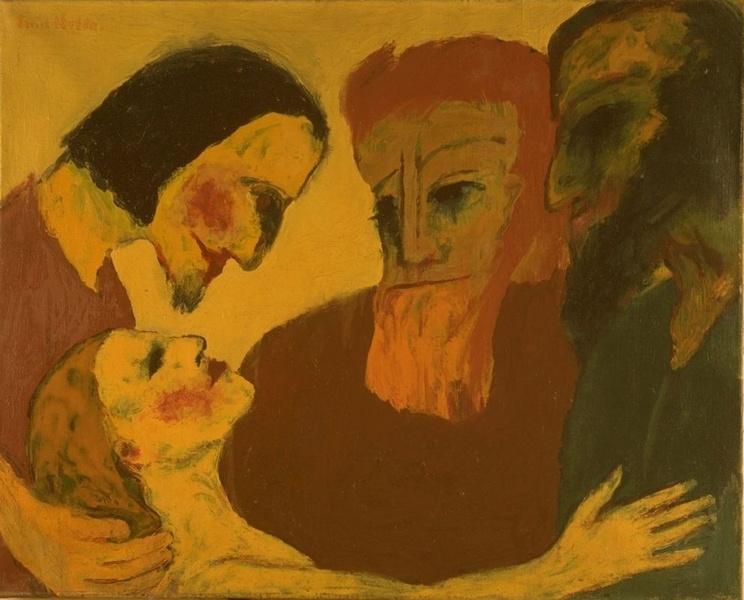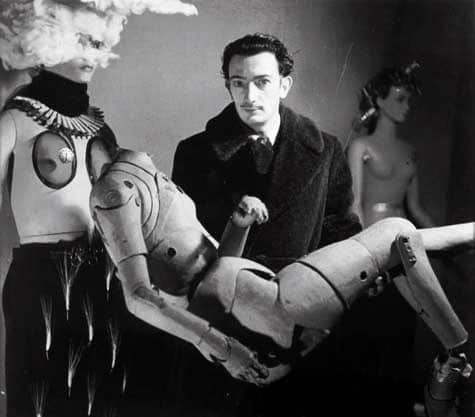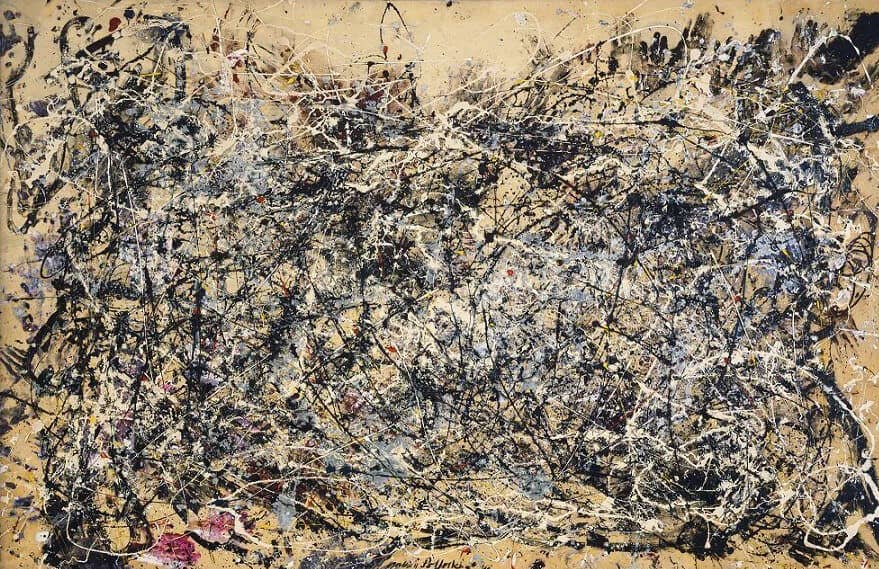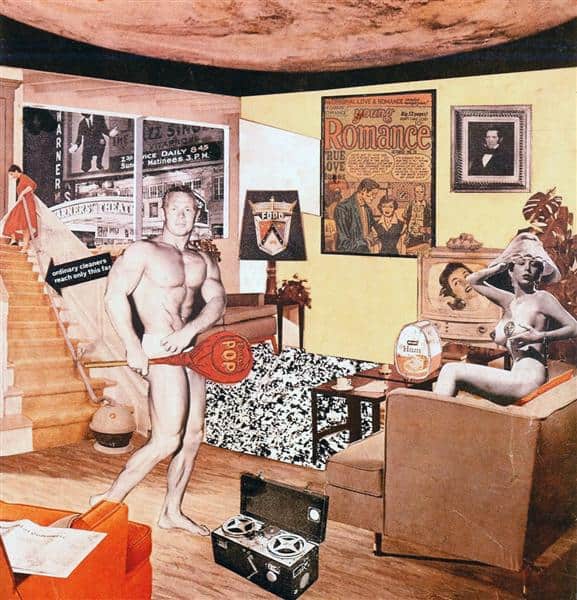Learning
The Ultimate Guide to Contemporary Art
By Artland Editors
“What happened? Art happened.”
Marina Abramovic
What is Contemporary Art?
An essential element to society, art is always thriving and adapting to an ever-evolving world. However, when it comes to the present day, the notion of contemporary art is so vast that its definition has proven to be hard to determine. What qualifies as “contemporary”?
Eclectic and inclusive by nature, the term ‘contemporary art’ encompasses numerous different art styles, genres and artistic approaches, and is loosely used to refer to the art of today and of the relatively recent past. While some argue that contemporary art came into being with the early 20th-century avant-garde movements and the beginnings of Modernism, according to others, contemporary art was established following World War II on the cusp of the 1950s. Still others think of contemporary art as that produced since the 1970s, and a last group believe that art can be defined as ‘contemporary’ solely when produced by living artists.
With its much-debated timeline and its multi-faceted quality, contemporary art is mainly distinguished by diversity: diversity of material, form, and subject matter, resulting in a world of visual complexity and richness that present the viewers with the challenges of interpretation.

A Short History of Contemporary Art
There are multiple ways to delve into the fascinating world of contemporary art. One may consider the development and succession of different artistic movements; the personalities of the major players in the field; not to mention the most iconic artworks that have defined our era. However, an equally compelling perspective can be gained through the investigation of the landmark exhibitions that triggered profound changes in the art historical canon and shaped the history and habits of exhibition-making through innovative practices.
Dive into the history of contemporary art through the exhibitions that defined entirely new genres, permanently impacting the course of art history:
The Salon Des Refusés, Paris, 1863
Marking a break from the Academic taste, the Salon des Refusés, held in 1863 Paris, proved to be the first of this string of art shows of great significance as well as a pivotal event in the development of contemporary art. Despite the critics’ negative reaction to the show, the Salon des Refusés attracted more than a thousand curious spectators a day and constituted the beginning of the end for the official Salon’s prestige and the dominance of its aesthetic arbitration.
The First Exhibition Of ‘Der Blaue Reiter’, Munich, 1911
The First exhibition of the editorial board of Der Blaue Reiter was representative of a significant yet short-lived artistic group and embodied one of the most fascinating chapters in art history. Held in Munich in 1911, the legendary show displayed around fifty artworks of members of Der Blaue Reiter, a network of like-minded artists pursuing the spiritual dimension of art as an antidote to the alienation of modern times.
The Armory Show, New York City, 1913
The 1913 International Exhibition of Modern Art, better known as The Armory Show, introduced the groundbreaking European avant-garde to an astonished American audience to the point that rarely – perhaps never – did an exhibition represent such an epoch-making event. It was a show of giant proportions, the largest of its kind ever mounted in the United States, featuring both American and European artists. The exhibition turned out to be a resounding success and, since then, American art history has been divided into two distinct periods: before and after the Armory Show.
The ‘Degenerate Art’ Exhibition, Munich, 1937
Opened in Munich in 1937, the ‘Degenerate Art’ Exhibition was one of the most shameful chapters of art history and, simultaneously, one of the most surprising. Conceived by the Nazi regime to condemn modern art by showing its alleged perverse nature, it ironically became not only the ultimate backhanded compliment to the participants but the most popular art show of all time.
The International Surrealist Exhibition, Paris, 1938
Many Surrealist group exhibitions had preceded it, many would follow all over the world – from Tokyo to Mexico City; however, the one that took place at Galérie Beaux-Arts in Paris in 1938, was without a doubt the key exposition of the genre. Not only did it represent the ultimate manifestation of the surrealist movement in the seminal interwar period, but also it anticipated the innovative concept of art show as an immersive experience by almost three decades.
The Ninth Street Show, New York City, 1951
The 1951 Ninth Street Art Exhibition of Paintings and Sculpture – also come to be known just as the Ninth Street Show was the exhibition that would definitely establish New York as the global capital of the art world.
Thirty-eight years after the introduction of European Avant-garde to a dumbfounded American audience, this pivotal exhibition marked a fundamental step in the path of American modern art, launching the first specifically American movement to achieve international resonance, Abstract Expressionism.
This Is Tomorrow, London, 1956
This is Tomorrow was a groundbreaking exhibition in several respects. Held at the Whitechapel Gallery in London in 1956, not only did it introduce an innovative collaborative as well as cross-disciplinary practice, but also extended the boundaries of contemporary visual culture by kick-starting British Pop. Although Pop Art is generally associated with the United States, the movement found an early voice in Britain as a critical and ironic reflection on the post-War consumer culture of the late 1950s, and This is Tomorrow served as its key starting point.
Primary Structures, New York City, 1966
Primary Structures: Younger American and British Sculptors was a seminal exhibition that presented the communal trend of a new generation of American and British artists challenging the traditional notion of art in its every aspect, from the conception of it to its making and display. Held at the Jewish Museum of New York in 1966, the show documented the rejection of both the expressive and the imitating quality of art in favour of pure, austere volumes, simplified materiality, and absolute absence of representational content.
Live in Your Head. When Attitudes Become Form, Bern, 1969
Live in Your Head. When Attitudes Become Form at Kunsthalle Bern was a controversial international survey of Post-minimalism and Arte Povera, at a time when these movements were still in the early stages of development and had yet to gain widespread exposure and recognition. When Attitudes Become Form reflected on the role of the curator and the artist within institutions, as well as the very approach towards exhibitions.
Famous Contemporary Artists
If you wish to get your head around the contemporary art world and its key players, here we provide you with a selection, by any means assumed to be conclusive, of artists whose ideas and practices changed our perceptions and whose art still greatly influences the times we live in.
Influential contemporary artists:
Where to Find Contemporary Art?
Different art institutions across the globe specialize in collecting, preserving, and displaying contemporary art, from contemporary art museums to private collections, and commercial contemporary art galleries. Many of these have become destinations in themselves, with the almost prodigious power of uplifting the economy of cities down on their luck – a phenomenon not surprisingly known as the “Bilbao effect,” after the iconic Bilbao Guggenheim museum, which made both its architect Gehry and the Basque city world-famous.
Here is our selection of major contemporary art museums whose incredible collections are well worth the trip:
Museum of Modern Art (MoMA), New York City
Situated in Midtown Manhattan, New York City, on 53rd Street between Fifth and Sixth Avenues, the Museum of Modern Art (MoMA) is one of the largest and most prominent museums of modern art in the world. MoMA’s collection includes more than 150,000 individual pieces (in addition to approximately 22,000 films, and 4 million film stills) and is considered by many to the best selection of modern Western masterpieces in the globe. The collection houses masterpieces such as Van Gogh’s Starry Night, Matisse’s The Dance I, Malevich’s White on White, and Pablo Picasso’s Les Demoiselles d’Avignon.
Tate Modern, London
Part of the Tate network together with Tate Britain, Tate Liverpool and Tate St Ives, Tate Modern houses a collection of British and international modern and contemporary art from 1900 to the present day. Tate Modern was opened in May 2000 and is located in the former Bankside Power Station on the south bank of the River Thames in London.
Museum of Contemporary Art (MOCA), Shanghai
Founded in 2005 by the Samuel Kung Foundation, the MOCA is the first non-profit, independent, contemporary art institution in Shanghai and is aimed to provide a platform for showcasing Chinese and international contemporary artists. The building that houses the exhibitions is a reworking of an abandoned greenhouse in People’s Park by Atelier Liu Yuyang Architects: geometric glass volumes were added to the structure, dissolving the predictable form of the original glass pavilion. The museum holds a biennale, MoCA Envisage, which focuses on Chinese contemporary art and considers its recent direction and themes.
Centre Pompidou, Paris
The Centre Pompidou is a multicultural complex located in the lively Beaubourg area right in the heart of the French capital. Designed by Renzo Piano and Richard Rogers as one of the first major examples of ‘inside-out’ architecture – the structural, mechanical, and circulation are exposed on the exterior of the building – and opened to the public in 1977, the centre hosts France’s national collection of art dating from 1905 to the present day on its 4th and 5th floors.
Inhotim, Brumadinho
The Inhotim (Inhotim Institute) is an open-air museum in Brumadinho in the Brazilian state of Minas Gerais. One of the largest foundations of contemporary art in Brazil, it was founded in 2004 to house the private art collection of former mining magnate Bernardo Paz and opened to the public in 2006. The collection is spread over two dozen art pavilions disseminated throughout a 5,000-acre botanical garden. The pavilions include more than 500 works by noted Brazilian and international artists, such as Hélio Oiticica, Yayoi Kusama, Anish Kapoor, Thomas Hirschhorn, Dominique Gonzalez-Foerster, Steve McQueen, Cildo Meireles and Vik Muniz.
FAQ about Contemporary Art
Contemporary art is the art of today and the recent past. Most contemporary artists are still alive and actively producing artworks. A key characteristic of contemporary art is its focus not solely on aesthetics but also on the message and the idea behind the artwork. It also involves experimentation with a variety of mediums and materials.
The debate over the beginning of contemporary art is still open. To some, contemporary art began after 1945, with the end of modernism. Others argue that it did not start until the 1960s when the pop art movement started, or even later.
The main difference between modern and contemporary art concerns time: modern art preceded contemporary art. However, it is also argued that, generally speaking, contemporary art involves more experimentation and freedom in ideas as well as a bigger focus on its social impact, while modern art was mainly conceived as an expression of individuality.
Contemporary art can be bought in different places. The most common places are galleries, auctions, and fairs, but the rise of online marketplaces such as Artland over the last few years has brought to a steady increase in online sales shares in the global art market value.
Relevant sources to learn more
The 30 Most Popular Artists of Today
New Art Museums Opening in 2021
Museum Architecture Today: Contemporary Spaces, Bold Design
15 Nordic museums
The Unusual Gallery: Discovering Art in the Strangest Places
Feminist Art: 10 Artists Whose Work Calls to Action

